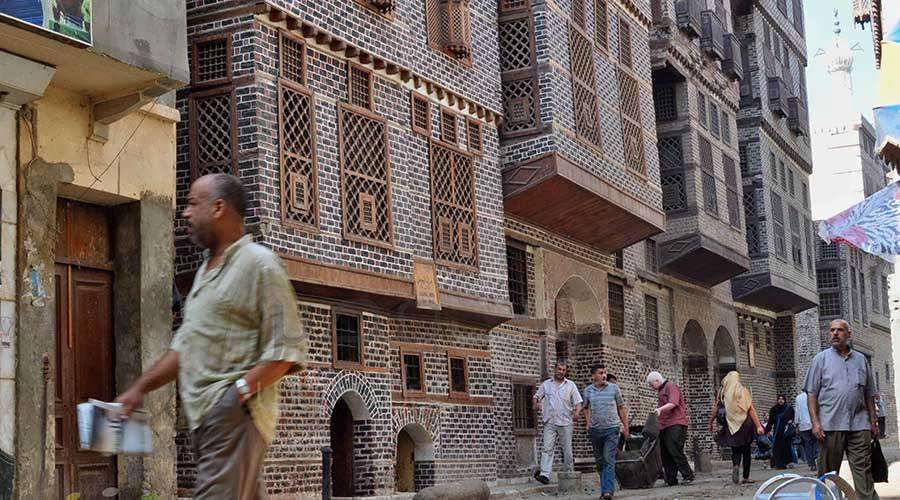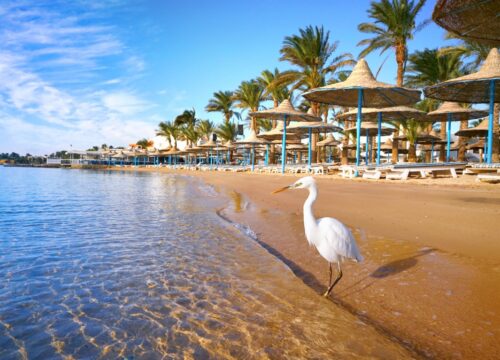A day tour to Rasheed from Cairo is an expedition into the heart of antiquity and an exploration of the hidden gems of Egypt’s past. As you traverse the pathways of Rasheed, also famous as Rosetta. Be prepared to unlock the secrets of history and immerse yourself in the wonders. That have long been veiled by time’s passage. Every step taken in this historic town echoes the resilience of ancient civilizations and resonates with the pursuit of knowledge and understanding.
Rasheed, also known as Rosetta, is a historically significant city in Egypt located in the Beheira Governorate, near the point where the Nile River meets the Mediterranean Sea. During the Islamic and Ottoman periods, Rasheed thrived as an important trade and military port. It played a crucial role in the defense of Egypt against foreign invasions, particularly during the Napoleonic campaign in the late 18th century. The city is also known for its well-preserved Ottoman-style houses, which provide insight into Egypt’s architectural heritage from that era.
One of the most remarkable historical discoveries associated with Rasheed is the Rosetta Stone. This ancient artifact was found in 1799 by a French soldier during Napoleon Bonaparte’s expedition to Egypt. The stone contained inscriptions in three different scripts: ancient Egyptian hieroglyphics, Demotic script, and Greek. Its discovery was groundbreaking, as it provided scholars with the key to deciphering hieroglyphics, unlocking the language of ancient Egypt after centuries of mystery. Following the British victory over the French, the Rosetta Stone was taken to Britain and is currently housed in the British Museum.
Despite its historical significance, Rasheed remains less prominent than other Egyptian cities such as Cairo and Alexandria. However, its rich heritage and role in Egypt’s history, particularly in the understanding of ancient Egyptian civilization, make it a crucial part of the country’s cultural legacy.
Rasheed: A Journey Through History and Culture
Introduction: The Historic Port City
Rasheed, also known as Rosetta, is a historic town located on the western bank of the Nile Delta in Egypt, approximately 65 kilometers northeast of Alexandria. Renowned for its rich history, architectural heritage, and cultural significance, Rasheed played a pivotal role during the Ottoman period and the early years of modern Egypt. The town is famously associated with the Rosetta Stone, which was discovered nearby and became instrumental in deciphering Egyptian hieroglyphs. This guide will explore the highlights of Rasheed, from its historical landmarks to its vibrant local culture.
Historical Significance: The Birthplace of the Rosetta Stone
The Rosetta Stone
The Rosetta Stone, discovered in 1799 by French soldiers during Napoleon’s campaign in Egypt, is one of the most famous artifacts in the world. The stone features inscriptions in three scripts: Greek, Demotic, and hieroglyphic, which allowed scholars, particularly Jean-François Champollion, to unlock the secrets of ancient Egyptian writing. The stone is now housed in the British Museum, but its discovery in Rasheed marked a turning point in the study of Egyptology and the understanding of ancient Egyptian civilization.
Ottoman Era
During the Ottoman period, Rasheed flourished as a significant port city and trading hub. Its strategic location along the Nile Delta made it an essential point for commerce and transportation. The town became known for its bustling markets, where merchants traded goods such as textiles, spices, and agricultural products. The wealth generated from trade contributed to the construction of impressive buildings and monuments that still stand today.
The Battle of Rosetta
Rasheed is also known for its historical significance during the Battle of Rosetta in 1801, which was fought between British and French forces. The battle was part of the larger conflict for control of Egypt and the Mediterranean region. The British victory ultimately led to the withdrawal of French troops from Egypt, marking a significant moment in the country’s colonial history.
Exploring Rasheed: Key Attractions
1. The Rosetta Stone Replica
While the original Rosetta Stone is housed in the British Museum, visitors to Rasheed can see a replica of the stone located in the town. This replica serves as a reminder of the town’s historical significance and its connection to the study of ancient Egypt. The replica is often accompanied by informative displays that explain the stone’s importance and its role in deciphering hieroglyphs.
2. The Ottoman Architecture
Rasheed is renowned for its well-preserved Ottoman-era architecture, which reflects the town’s historical prosperity. Visitors can explore the narrow streets lined with traditional houses, many of which feature intricate wooden balconies and decorative facades. Notable examples of Ottoman architecture include:
The Abu Mandour Mosque: This mosque, built in the 18th century, is known for its beautiful minaret and intricate tile work. It serves as a place of worship and a cultural landmark in the town.
The Al-Sayeda Zainab Mosque: Another significant mosque in Rasheed, it showcases stunning architectural details and serves as a gathering place for the local community.
3. The Old Port
The old port of Rasheed is a charming area that offers a glimpse into the town’s maritime history. Visitors can stroll along the waterfront, where fishing boats and traditional feluccas (sailboats) can be seen. The port area is lively, with local fishermen selling their catch and vendors offering fresh seafood. The picturesque views of the Nile and the surrounding landscape make it a perfect spot for relaxation and photography.
4. The Museum of Rosetta
The Museum of Rosetta, located in a historic building, showcases the town’s rich history and cultural heritage. The museum features a collection of artifacts, including ancient pottery, tools, and textiles, as well as exhibits related to the Rosetta Stone and the town’s role in Egyptian history. Visitors can learn about the daily life of the residents and the significance of Rasheed in the broader context of Egyptian history.
5. The Coptic Church of St. George
The Coptic Church of St. George is a beautiful example of Coptic architecture in Rasheed. The church features stunning frescoes and intricate woodwork, reflecting the artistic traditions of the Coptic community. Visitors can explore the church’s interior and learn about the history of Christianity in the region.
Cultural Experiences: Engaging with Local Life
1. Traditional Markets
Exploring the local markets in Rasheed is a delightful way to immerse yourself in the culture of the town. The bustling souks offer a variety of goods, including spices, textiles, handicrafts, and fresh produce. Engaging with local vendors and sampling traditional foods provides a unique insight into the daily life and customs of the residents.
2. Local Cuisine
Rasheed is known for its delicious traditional cuisine, which reflects the flavors of the Nile Delta. Visitors can savor a variety of local dishes, including:
Fattah: A traditional dish made with layers of rice, bread, and meat, often served during special occasions.
Koshari: A hearty mix of rice, lentils, and pasta topped with a spicy tomato sauce and crispy onions.
Seafood: Given its proximity to the Nile, Rasheed offers a variety of fresh seafood dishes, including grilled fish and shrimp.
Dining at local restaurants or enjoying street food allows visitors to experience the rich culinary heritage of the region.
3. Festivals and Celebrations
Rasheed hosts various cultural festivals and celebrations throughout the year, showcasing the town’s traditions and customs. Events such as religious festivals, local fairs, and cultural performances provide visitors with an opportunity to engage with the community and experience the vibrant local culture.
Natural Beauty: The Surrounding Landscape
1. The Nile River
The Nile River is the lifeblood of Rasheed, providing water for agriculture and supporting the local economy. Visitors can take boat trips along the river, enjoying the serene beauty of the landscape and the opportunity to observe local wildlife. The riverbanks are often dotted with lush greenery, creating a picturesque setting for relaxation and exploration.
2. The Delta Landscape
The surrounding Delta landscape offers opportunities for outdoor activities, including hiking, birdwatching, and exploring the natural beauty of the region. The fertile land is home to a variety of flora and fauna, making it a paradise for nature enthusiasts.
Conclusion: Discovering Rasheed
Rasheed, with its rich history, cultural heritage, and natural beauty, is a captivating destination that offers a unique glimpse into Egypt’s past. From the significance of the Rosetta Stone to the charming streets lined with Ottoman architecture, the town invites exploration and discovery. Whether you are wandering through the local markets, savoring traditional cuisine, or enjoying the scenic views along the Nile, Rasheed promises an unforgettable journey through time and culture. As you immerse yourself in the warmth of the local community and the beauty of the landscape, you will come to appreciate the unique character of this remarkable town.
Every wall, every artifact in Rasheed tells a story . A story of resilience, adaptation, and survival against the test of time. Embrace the history of Rasheed not merely as tales of the past but as an inspiration for the present. Let the echoes of its ancient structures and the wisdom of the Rosetta Stone motivate you to seek knowledge relentlessly, celebrate diversity, and persevere through the ages. Knowing that the mark we leave on history is defined by our pursuit of understanding. Our unity in diversity. Our resilience against the trials of time


